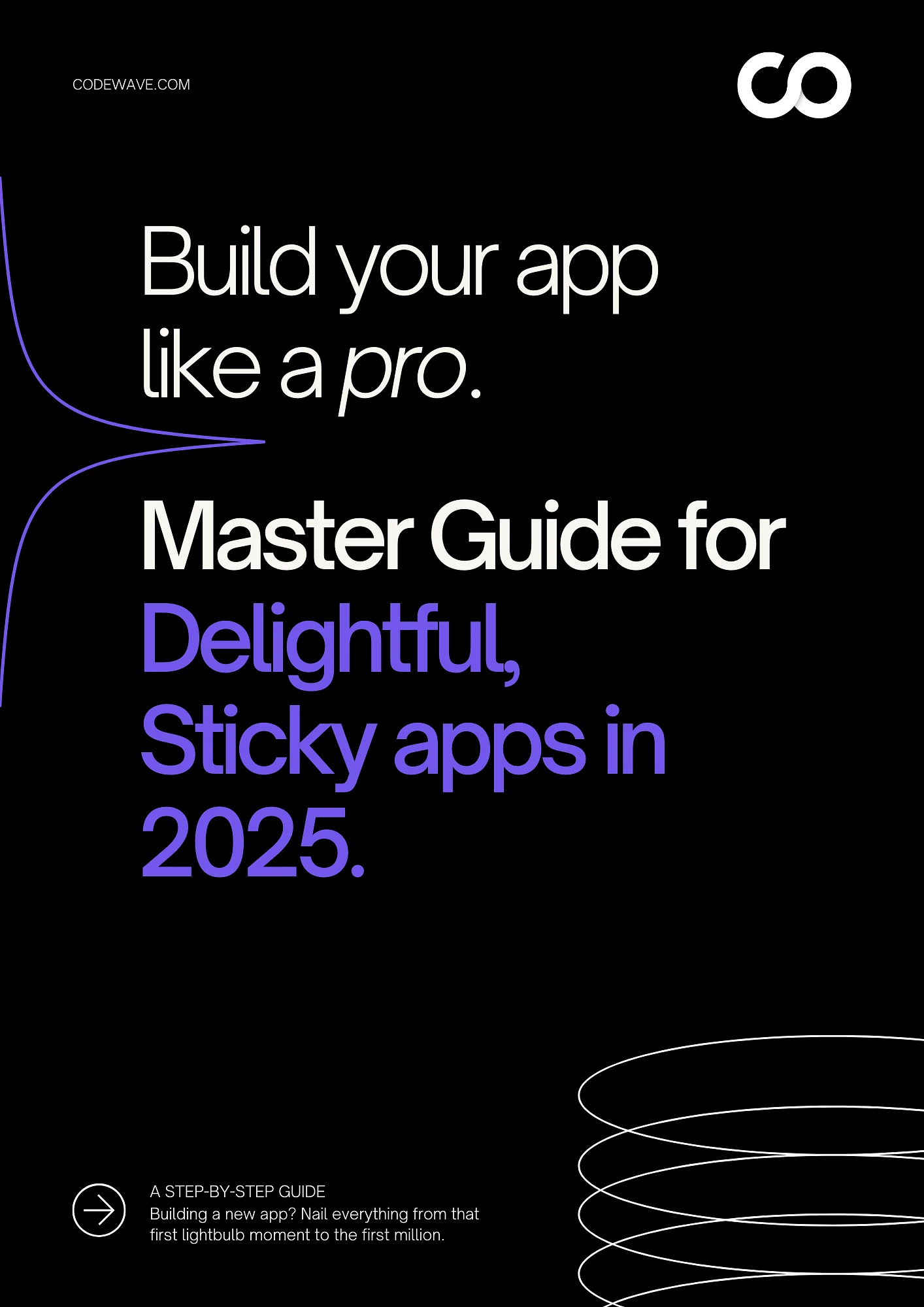Ever felt like the tech world is moving at the speed of light while you’re still figuring out how to catch up? You’re not alone. For decades, building an application meant deep knowledge of programming languages like Java, Python, C++, or JavaScript. Every line of code was carefully written, tested, debugged, and optimized. But in 2025, No-Code and Low-Code platforms are challenging this norm, allowing businesses to build applications with minimal or even zero coding.
So, does this mean coding is becoming obsolete? Not exactly. Instead, development is evolving, shifting towards a more abstracted, component-based approach where coding is no longer the bottleneck.
Did you know that by 2025, 70% of new enterprise applications will be built using No-Code or Low-Code platforms? That’s a huge shift from just a few years ago. This shift is happening because businesses want faster deployment, lower costs, and more flexibility.
But what’s really driving this change? Let’s break it down.
Why Businesses Are Switching to No-Code and Low-Code
1️. Faster Development Cycles
- No-Code tools eliminate the need for manual programming by using visual development environments.
- Low-Code platforms offer pre-built components but allow developers to extend functionality with JavaScript, Python, or API integrations.
- Low-code and no-code platforms can reduce the time needed to build custom applications between 50% -90% vs. traditional application development that relies on coding language.
2️. Lower Development Costs
- Traditional software development requires a team of engineers, designers, and testers.
- With No-Code, business users (non-technical professionals) can build apps themselves.
- Low-Code lets companies reduce engineering headcount by 50-70% while still maintaining scalability.
3️. Enterprise-Grade Scalability & Security
- No-Code platforms rely on serverless architectures (AWS Lambda, Firebase, or proprietary cloud hosting).
- Low-Code platforms integrate with enterprise security protocols (OAuth 2.0, SAML, IAM) and support custom backend logic for scalability.
4️. AI-Driven Automation & API Integrations
- No-Code tools now incorporate AI automation (AutoML, NLP, chatbot builders) for drag-and-drop AI applications.
- Low-Code platforms integrate with RESTful APIs, GraphQL, and microservices architectures to connect with enterprise software (SAP, Salesforce, Workday).
Here is the average forecasted growth of the global no-code/low-code market
Source: User Guiding
Here is the estimated size of the global Low-Code/No-Code market year-by-year
Source: User Guiding
So, Does This Mean Coding is Obsolete?
Not quite. While No-Code tools eliminate manual coding, they don’t allow full customization beyond their predefined UI components. Low-Code, on the other hand, still requires developers for backend logic, API orchestration, and security compliance.
Before deciding which one fits your business needs, let’s break it down further: How does No-Code differ from Low-Code in 2025, and what are the technical implications?
No-Code vs. Low-Code—Breaking Down the Technical Differences
Not all software development platforms are created equal. While No-Code and Low-Code platforms share the goal of simplifying application development, their underlying architectures, customization capabilities, and scalability options differ significantly.
Let’s get technical.
1. Core Development Model: How They Work Under the Hood
| Feature | No-Code | Low-Code |
| Development Approach | 100% visual, drag-and-drop UI, workflow automation, pre-built components. | Model-driven development with extensibility via scripting (JavaScript, Python) and API calls. |
| Backend Customization | No access to server-side logic or databases. Backend is managed by the platform. | Allows backend logic customization, database queries, and cloud integrations. |
| User Target | Business users, citizen developers, non-technical teams. | Developers, IT teams, enterprise architects. |
| Best for | Simple applications, MVPs, internal workflows, forms. | Scalable applications, enterprise-grade automation, and deep system integrations. |
2️. UI/UX Customization & Extensibility
- No-Code:
- Offers pre-built templates, UI components, and drag-and-drop builders (e.g., Webflow, Bubble).
- Limited control over frontend behavior—custom interactions rely on the platform’s constraints.
- No manual DOM manipulation (e.g., can’t tweak React.js or Vue.js components).
- Low-Code:
- Allows custom UI development using JavaScript, CSS, and third-party libraries.
- Supports dynamic UI updates, state management (React, Angular, Vue), and component-based architecture.
- Provides flexibility for multi-device responsive layouts (PWAs, native mobile apps, web apps).
3️. Database & API Integrations
- No-Code:
- Uses pre-configured database solutions (e.g., Firebase, Airtable, Supabase).
- Limited direct access to SQL queries, database indexing, and custom schema modifications.
- Connects with external data sources via pre-built API connectors (Zapier, Make, Retool).
- Low-Code:
- Supports direct database queries (SQL, NoSQL) and advanced data modeling.
- Allows RESTful API & GraphQL integration for real-time data fetching.
- Supports microservices architecture, enabling backend modularization.
4️. Security & Compliance Considerations
- No-Code:
- Built-in security layers (SOC 2, ISO 27001, GDPR-compliant).
- Lacks fine-grained access controls—data governance depends on the platform’s policies.
- Vendor lock-in risk—apps are hosted on third-party cloud infrastructure (Bubble, OutSystems).
- Low-Code:
- Role-based access control (RBAC), OAuth 2.0, IAM integration.
- Supports on-premise deployment or hybrid cloud solutions for data sovereignty.
- Allows custom encryption models and advanced authentication layers.
5️. DevOps, CI/CD, and Scalability
- No-Code:
- Typically does not support DevOps automation, version control, or CI/CD pipelines.
- Apps are hosted in a serverless environment with auto-scaling (e.g., AWS Lambda, Vercel).
- Limited control over performance tuning, caching strategies, and load balancing.
- Low-Code:
- Integrates with DevOps pipelines (Git, Jenkins, Docker, Kubernetes) for automated deployments.
- Supports custom cloud infrastructure (AWS, Azure, GCP) with fine-tuned performance optimizations.
- Allows scalability planning with microservices and event-driven architecture.
Which One Should You Choose?
Go for No-Code if:
✔️ You’re a non-technical user looking for rapid development.
✔️ You need an MVP, internal automation, or simple web app.
✔️ You’re okay with platform dependency and limited backend control.
Choose Low-Code if:
✔️ You need custom workflows, API integrations, and database control.
✔️ You require enterprise security, DevOps, and scalability options.
✔️ Your project involves complex logic, backend processing, or performance tuning.
So, while No-Code is great for quick wins, Low-Code offers the flexibility needed for long-term scalability. But how do these platforms fit into the broader software development trends of 2025?
The Business Use Cases of No-Code & Low-Code in 2025
We’ve discussed how these platforms work, but now it’s time to highlight where they are most effective in different industries—with a 2025 outlook on how they are transforming business operations.
Healthcare: Enhancing Patient Engagement & AI-Driven Diagnostics
- No-Code: Healthcare providers use no-code platforms to build patient portals and appointment scheduling systems. These tools allow quick customization and deployment, enabling clinics and hospitals to enhance patient engagement and streamline administrative processes. AI-powered chatbots built with no-code tools help manage patient queries, reducing the burden on support staff.
- Low-Code: More advanced healthcare solutions, such as remote patient monitoring systems and AI-powered diagnostics, are built using low-code platforms. These platforms integrate with electronic health records (EHRs) and IoT-enabled medical devices, allowing real-time data analysis and AI-driven decision-making for improved patient outcomes.
Finance: Automating Compliance & AI-Powered Risk Management
- No-Code: Financial institutions use no-code platforms to automate loan approval workflows and regulatory compliance checks. AI-driven fraud detection tools built with no-code can flag suspicious transactions in real-time. No-code chatbots assist in customer onboarding, helping financial institutions quickly verify identities and process applications without manual intervention.
- Low-Code: Low-code platforms power more complex financial systems such as predictive analytics for fraud prevention and risk assessment engines. These tools analyze vast datasets to detect financial irregularities, allowing banks, insurance firms, and investment companies to minimize risks and improve decision-making. Low-code AI models can assess customer creditworthiness based on historical transaction data.
Retail & E-Commerce: Hyper-Personalization & AI-Driven Sales
- No-Code: Retailers use no-code platforms to build drag-and-drop e-commerce websites and integrate AI recommendation engines for personalized shopping experiences. No-code tools also enable chatbots for customer support and automated marketing campaigns, helping brands enhance engagement and drive conversions.
- Low-Code: Low-code platforms support more sophisticated retail applications, such as AI-powered inventory management and real-time price optimization. E-commerce businesses use low-code to integrate demand forecasting models that predict stock levels, prevent overstocking or stockouts, and dynamically adjust prices based on competitor trends.
Manufacturing: Smart Factories & Predictive Maintenance
- No-Code: Manufacturers use no-code IoT dashboards to monitor production lines in real time. These platforms help track equipment performance, flagging inefficiencies without needing a dedicated software team. No-code workflow automation streamlines supply chain operations, improving logistics and resource allocation.
- Low-Code: Low-code platforms are used to develop predictive maintenance solutions that detect potential machinery failures before they happen. By integrating AI and IoT sensor data, manufacturers can implement computer vision-based defect detection, reducing product defects and improving overall production quality.
From healthcare to manufacturing, No-Code and Low-Code platforms are reshaping industries by enabling businesses to automate processes, improve efficiency, and enhance customer experiences. As these technologies continue to evolve, companies must determine how best to integrate them into their workflows.
The question is no longer if businesses should adopt No-Code or Low-Code—but rather, how they can leverage these platforms to stay competitive in 2025 and beyond.
No-Code & Low-Code Are Here to Stay—But Are You Ready?
Companies that integrate these platforms strategically will not only accelerate digital transformation but also future-proof their operations in an era where agility and speed define success. The rise of No-Code and Low-Code platforms is no longer a passing trend—it’s a fundamental shift in how software is built. Businesses that adapt to this change will accelerate innovation, cut costs, and bring products to market faster than ever before.
However, choosing the right approach—No-Code for speed, Low-Code for flexibility, or custom development for full control—is not a one-size-fits-all decision. The key lies in understanding your business needs, scalability requirements, and long-term goals.
So, the real question isn’t “Should you use No-Code or Low-Code?” It’s “How can you leverage it effectively?”
Looking to integrate No-Code or Low-Code into your business strategy?
Let’s build something scalable, secure, and future-proof. Talk to Codewave’s experts today.
Codewave is a UX first design thinking & digital transformation services company, designing & engineering innovative mobile apps, cloud, & edge solutions.







